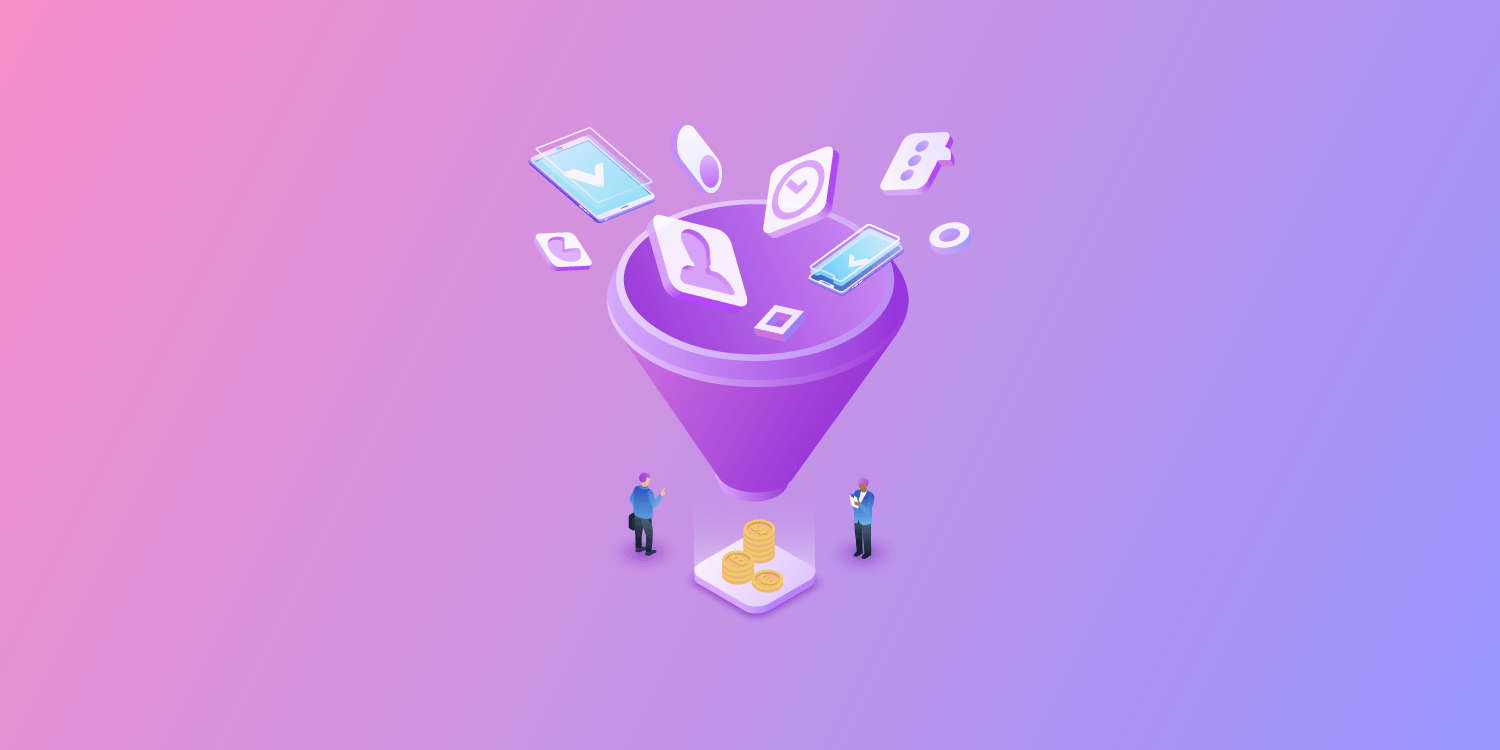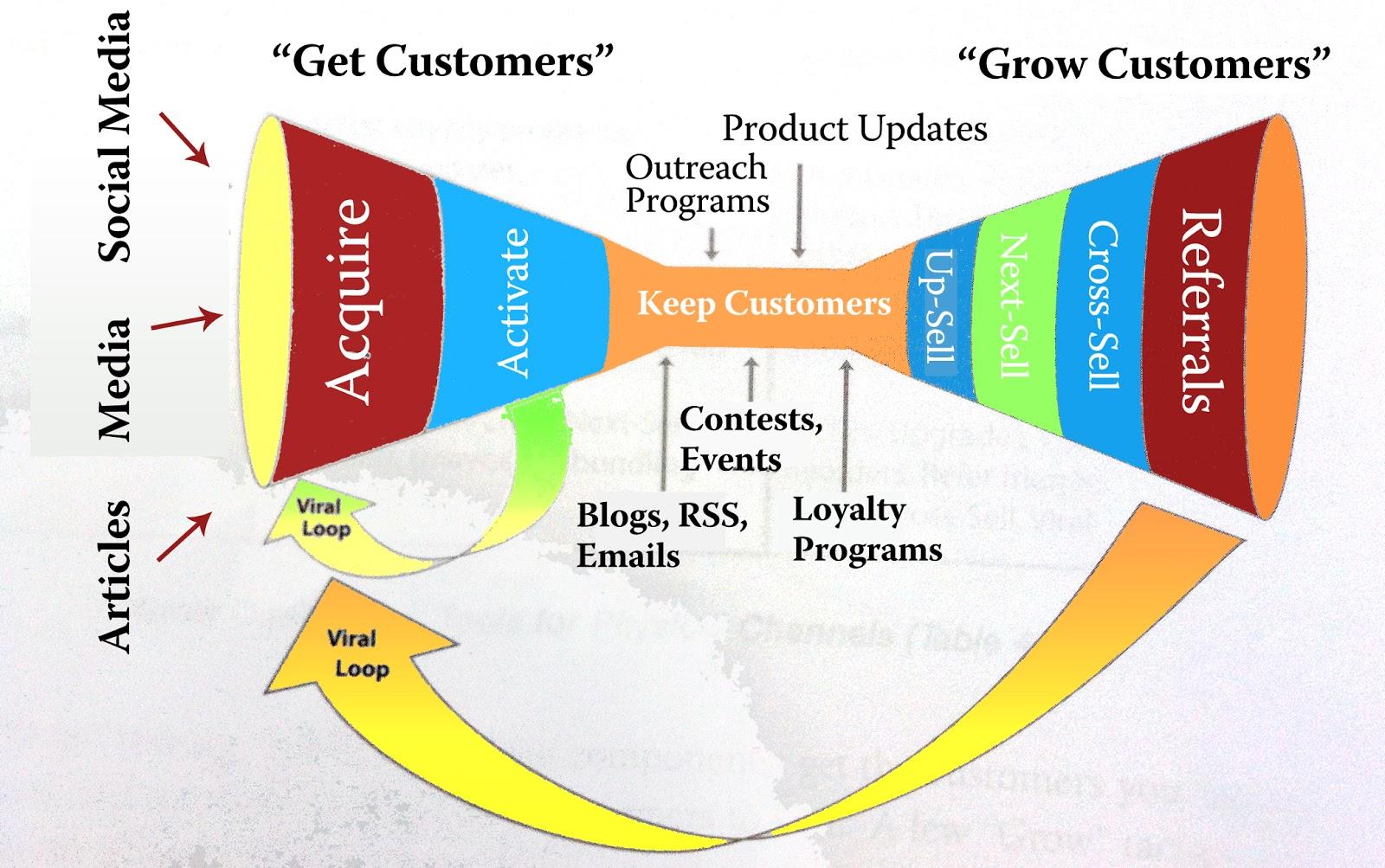Your client’s website is gorgeous, the copy is tight and perfectly written to convert customers, and yet, sales and revenue are mediocre.
Yes, a well-designed website with a good page layout, professional design, and catchy copy matters. However, if you’re not sending enough visitors to the site (lead generation) or keeping them engaged with the brand after they’ve indicated their interest (lead nurturing), sales are going to stutter.
That’s where the conversion funnel comes into play.
The truth is that all businesses (whether they know it or not) already have a conversion funnel. But if sales are lagging, then the funnel is not optimized. In fact, this is an all-too-common problem. According to a report by Econsultancy, only
22% of businesses are satisfied with their conversion rates. This is probably because, as any good sales person knows, sales is about more than just interpersonal skills — it’s a game of numbers. You win the game by generating new leads at the top of the funnel, nurturing them until they become customers, and finally turning them into brand advocates (which helps generate new leads!).
So how do you go about optimizing your conversion funnel? Read on to learn how to properly feed your funnel and nurture leads all
the way through to the sale and beyond.
The Classic Conversion Funnel
Think of the conversion funnel as just that, a funnel. The top of the funnel is the widest part and where you generate leads. As potential customers move through the funnel, some will inevitably drop out. The goal is to ensure that as many people make it as far as possible through the funnel.
Here are some ways to think about the different levels of the conversion funnel:
Awareness/Acquisition: This is the attraction stage of the conversion funnel. This is where you drive potential customers to your site through social media, search marketing, PPC ads, etc. - Interest: This is typically where you provide more information on a product or service in exchange for something of value like an email or phone number. This is also where you typically provide important information about your industry and your company. B2B customers will require a lot of content here since these sales are typically high-dollar service deals or more-expensive SaaS products. Retail, restaurants and eCommerce customers will usually require less content. Here is a good shorthand for thinking about the amount of content to provide in exchange for some kind of information about the potential customer: the higher the price of your product or service, the more you need in this part of the funnel. Things to consider when creating content for this part of the conversion funnel include:
- What do customers need to know about your industry, services, and products to make an informed decision?
- What questions would they have and how can you answer them?
- What kind of content (eBook, video, infographic, product gallery, etc.) would resonate with the customer?
- Conversion: This is where the customer actually purchases a product or service.
- Retention/Re-engagement: It may seem counter-intuitive, but the stage at which the customer actually converts is not the end of the conversion funnel. It’s critical to a business that you re-engage past customers and encourage them to keep coming back as these people are incredibly valuable. Lead generation is expensive, and bringing a brand-new prospect all the way through the conversion funnel costs up to
five times more than reselling to an existing customer. The odds of making a current customer a repeat buyer are about 60-70%; for new customers, it’s 5-20% (or possibly even lower). In fact,
CrazyEgg puts the chances of a new lead purchasing at ~2.8%. Additionally, repeat customers are far more likely to turn into brand ambassadors.
The content you use throughout the conversion funnel can range from less salesy and more informative to more specific and time-sensitive (e.g. flash sales, coupons, discount codes, etc.). There is no perfect recipe that guarantees customer conversion, so it may be worth trying a few different combinations of content pieces until you find one that works.
A More Comprehensive Conversion Funnel
Optimizing the traditional conversion funnel as described above is a solid starting point for any business looking to improve sales. However, you can make that model better.
Neil Patel suggests a few upgrades to the traditional funnel to make it more personalized for each step of the journey. This upgraded funnel “places more emphasis on customer behaviors, nurturing, and retention at each step of the customer journey.”
Patel says to ask these questions when thinking through the customer journey through the conversion funnel:
- How do we make the customer more aware of our brand?
- Why would they not act and what can we do to fix it?
- How do we entice them with an irresistible offer?
- How can we recognize and anticipate their needs?
He visualizes the funnel like this:
The goal of Patel’s conversion funnel strategy is to roll “lead nurturing, behavioral targeting, retention and referrals … into one marketing strategy.”
The Power of Personalizing the Conversion Funnel
An absolute essential part of improving the funnel is to use personalization on your website, in retargeted ads, and in emails. You probably already know how to use retargeted ads and set up drip email campaigns. However, if you haven’t used personalization yet, you absolutely should to the fullest possible extent.
Why? Check out just a few stats:
Emails with personalized subject lines are 26% more likely to be opened, according to
Campaign Monitor.- Personalized emails deliver 6x higher transaction rates, reports Experian.
- Marketers claim a 760% increase in revenue from segmented campaigns, says Campaign Monitor.
- Personalized calls-to-action convert 202% better than default calls-to-action, reports HubSpot.
- Personalized email marketing is said to generate a median ROI of 122%, according to Instapage.
Clearly, it’s worth asking yourself, “How can I improve my personalization efforts to better support the conversion funnel?”
An incredibly underutilized strategy is a customized website experience for your potential clients. Today, with platforms like Duda,
personalized website pages are possible and within reach. You can set up rules to deliver personalized content based upon:
Shopper behavior (such as previously purchased products)- Time since last visit
- New vs. returning customers
- Vertical market
- Device type (i.e. mobile, desktop, tablet)
Other Ways to Optimize the Funnel
Patel notes that you’ve got to create a content plan that anticipates, meets, and exceeds leads’ expectations. Don’t build content in isolation. Create content that nurtures people through the conversion funnel.
And go after “quick wins.” This means that there needs to be a clear tie from the PPC ad or social media share and the website or landing page it leads to. If you brought a potential customer to your site with a Facebook ad about a specific real estate property, then the landing page needs to display that house for sale — underneath the information about the property, you can include why you’re the right realtor to help the visitor get the keys to their dream home.
Another way to build on the typical sales funnel is to rely heavily on referrals. Note that Patel emphasizes this in his funnel illustration. How you set up the referral program depends on your industry and your average product/service price point. The key is you have to make it worth it for both the current customer and the new customer.
Visible Mobile Plan does this well, allowing current customers to get down from $40 per month for unlimited data/calling to $25 per month if three friends join. Tesla’s 2.0 referral program allowed customers to give $1,000 off a Tesla to friends, and get special VIP factory tours, and more. Tesla made
40 times the cost it invested in this promotion. Likewise,
Airbnb’s referral programs, which provide $25 off for new customers on average, netted them 25% more bookings.
The bottom line: don’t leave money on the table. Use some type of referral program at the bottom of your conversion funnel that pays off for both your customers and anyone they can convince to become one.
Apply Key Insights from Google
Google conducted a study on what it called the “messy middle” when consumers research and evaluate brands. Google found that a fictional unknown cereal brand managed to win 28% of shopper preference over the established brand when it was “supercharged” with benefits, including five-star reviews and an offer of 20% extra for free. Even more telling, a fictional car insurer won an 87% share of consumer preference when it offered advantages across six biases:
- Category heuristics: Short descriptions of key product specs.
- Power of now: The longer you have to wait or think about a purchase, or the more work you have to do to make the purchase (i.e. entering all kinds of information at the checkout), the weaker the proposition becomes.
- Social proof: Recommendations and reviews matters. These should always be included.
- Scarcity bias: As stock or availability of a product decreases, the more desirable it becomes.
- Authority bias: Being swayed by an expert or trusted source.
- Power of free: A free gift with a purchase, even if unrelated, can be a powerful motivator.
What this means is that you can use these six key biases to improve your conversion funnel. First, make sure that consumers find you. Then, as they move down the sales funnel, make sure you include the other elements.
Test Your Conversion Funnel (Over and Over)
You can see exactly how visitors use your site and where you lose them in the conversion funnel by using
Google Analytics’ Funnel Visualization report. First, you have to set up the funnel with each step the customer would ideally take to convert. Various products or services on your site will have a different funnel path through your site, so set up at least one to start and test. Then, set up other paths through your site.
The next thing you want to do to improve your channel is to A/B test as much as possible. You can test two different pages against each other to see which converts better. Put each into the funnel on Google Analytics to run the test. Do this over and over again as you refine your strategy.
With today’s data, you can see exactly how leads are coming to your site and what they do in each part of the funnel. Use this information to continually refine and personalize your content, emails and web pages for these potential customers.
Don’t Wait to Examine Your Conversion Funnel
You can’t leave your funnel up to chance. Every conversion funnel needs work — either a little or a lot. So dig into the data, and begin improving it and your revenue today.
Remember to use personalization, which consumers want and expect. Be sure to work in Google’s six key biases into the content you create. Use referrals, which get amazing ROI, and be sure to re-engage your past customers and turn them into brand ambassadors. Follow this advice, and you’ll reap the rewards of a fully functioning conversion funnel.








